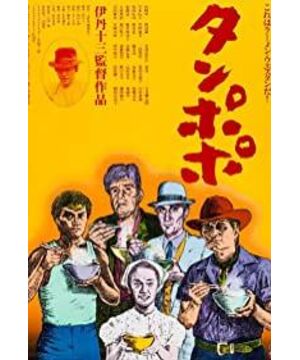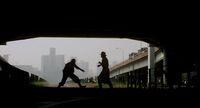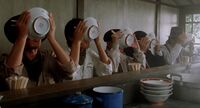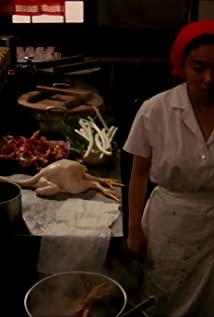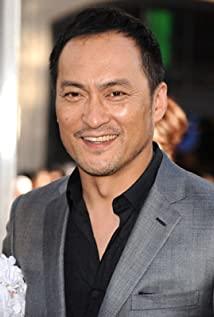Probably can't use any known adjectives to express my love for this movie, plus I use "really, really, really like this movie" every time to express my love for this movie, presumably many people I think this is just an old-fashioned statement, but for today's work, I feel that I not only need to express my high love for it, but also clarify the misunderstandings that people have (possibly) caused by my evaluation of the film. Because the adjectives in this world are limited, it is really difficult for me to express my appreciation for my favorite movies in different forms, so I always use the established vocabulary to write, maybe a little boring and lack of variability, but I can be sure The thing is, whenever I say something like this, it means: I was really moved by that movie! And today is also the same, "Dandelion" directed by Itami Thirteen can be said to be very shocking to me, and may be included in the ranks of the top 10 private film history.
Yes, that's how I like this funny movie.
The main story of this film can be summed up in one sentence: "Only food and love can't live up to it." The story tells that the freight driver Heiro (played by Yamazaki) helps the single mother Dandelion (played by Miyamoto Nobuko) to improve the skills of making ramen. The two people's enthusiasm for ramen has touched the friends around them, and everyone helps Dandelion develop delicious dishes that can attract many diners. Hand-Pulled Noodle. The main story is interspersed with many side stories, which seem to be irrelevant, but they all illustrate the inseparability of food and life. It highlights the demandingness of food in the main story, and the ending with the bottom of the bowl upside down not only brings the movie to a climax, but also makes the audience understand the importance of food in life.
The arrangement of the script is very interesting. First of all, both the story and the character design have made the most ingenious combination of western cowboys and Japanese culture, and there is no sense of incongruity. This kind of setting makes this movie about food more lively and bloody; In addition, director Itami Thirteen's seemingly casual movement of the camera, and several canned dubbing that highlights the child's interest make the whole movie more dexterously jump into the audience's life.
It must be mentioned that all the arrangements in the first ten minutes made me like it beyond words. In these ten minutes, I was sure that I would like this movie very much, and the whole film was inextricably related to the ingeniousness of these ten minutes. Second, the level is so high that it is difficult for me to express it easily.
At the beginning of the show, it was the extremely novel method of "breaking through the fourth wall", which interacted with the audience to the greatest extent. The man who eats curry-flavored potato chips in the movie theater, just this beginning has won my heart. The way to enter the main story is the about 5-minute "Ramen Eating Tutorial", which not only describes very vividly, but also allows the audience to integrate into the film more easily with one command and one action. In addition, the close-up photography is both detailed and elegant. The transition of the focal length is also very smooth, conveying the deliciousness of the food to the viewer in the best way. Following the "Eating Ramen Tutorial", the actors ate all the ramen step by step, and the audience also entered the story layer by layer without knowing it. The ten-minute title can be said to be "fascinating". best interpretation.
And then, both the main story and the side stories are very interesting, especially the two have the same level of memory in the hearts of the viewers. It can be said that there is a feeling of a kind of double story, so the side stories are clever It gives people a hazy feeling of "drama within a play", the so-called "seeing flowers in the fog, the more you look at them", but at the same time, it also makes people more and more addicted to watching, and they want to know more and more about this flower that regards ramen as a belief. world.
So far, I have to mention the ingeniousness of the side stories. Every little story has its own memory. Whether it is a meaningless study of Western fake culture, the ability of the boss is far less than that of the subordinate, and the ingredients are always unbearable. The cheap hands, and the mother cooking for the family until she died... and so on, are all interesting and meaningful sketches, and among them, the love life of Yakusho Koji in a white suit and his wife is the most vivid and unique. , indicating that whether it is people's daily life or people's emotions and desires are inseparable from the influence of food.
And with the advent of the ultimate ramen noodles that can make people's bowls turn upside down, these behind-the-scenes workers have returned to their jobs and continued their original lives. They may still miss the time when they made ramen together, but the feast of the world will eventually come to an end. It's just everyday. But the shot the director chose was not the bleak back, but sent off Ah Jian, who was watching the truck leave, through the rear-view mirror, which made me think that maybe many partings in the world are for the next reunion Be prepared that "parting" may not always be uncomfortable.
At the end of the film, there is a long shot of a baby sucking breast milk. It is slowly zoomed in from the distant view, and you can see the satisfied expression of the baby when sucking breast milk. The side stories are connected again, and the most direct and appropriate portrayal of food color.
Food is so pure to people.
View more about Tampopo reviews


